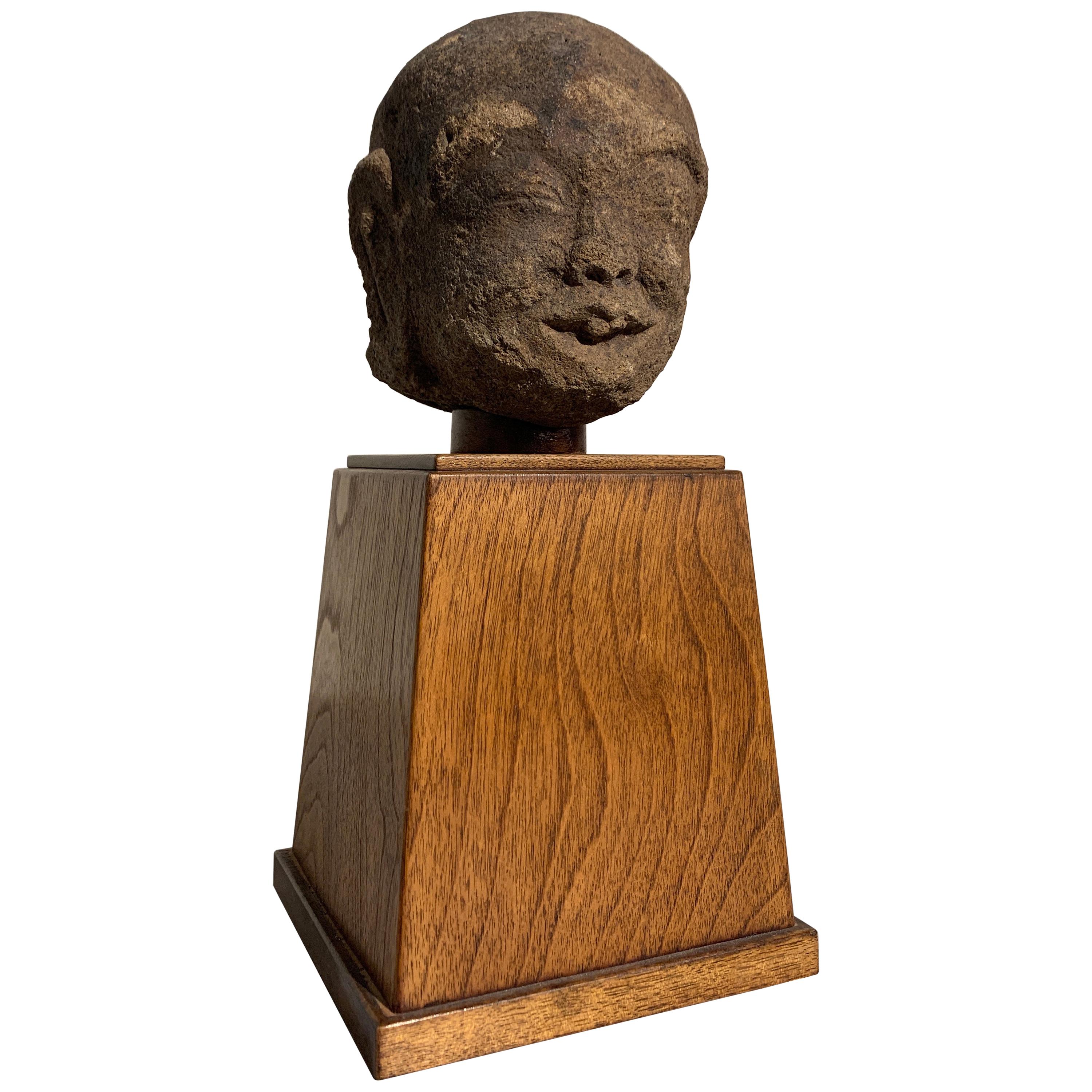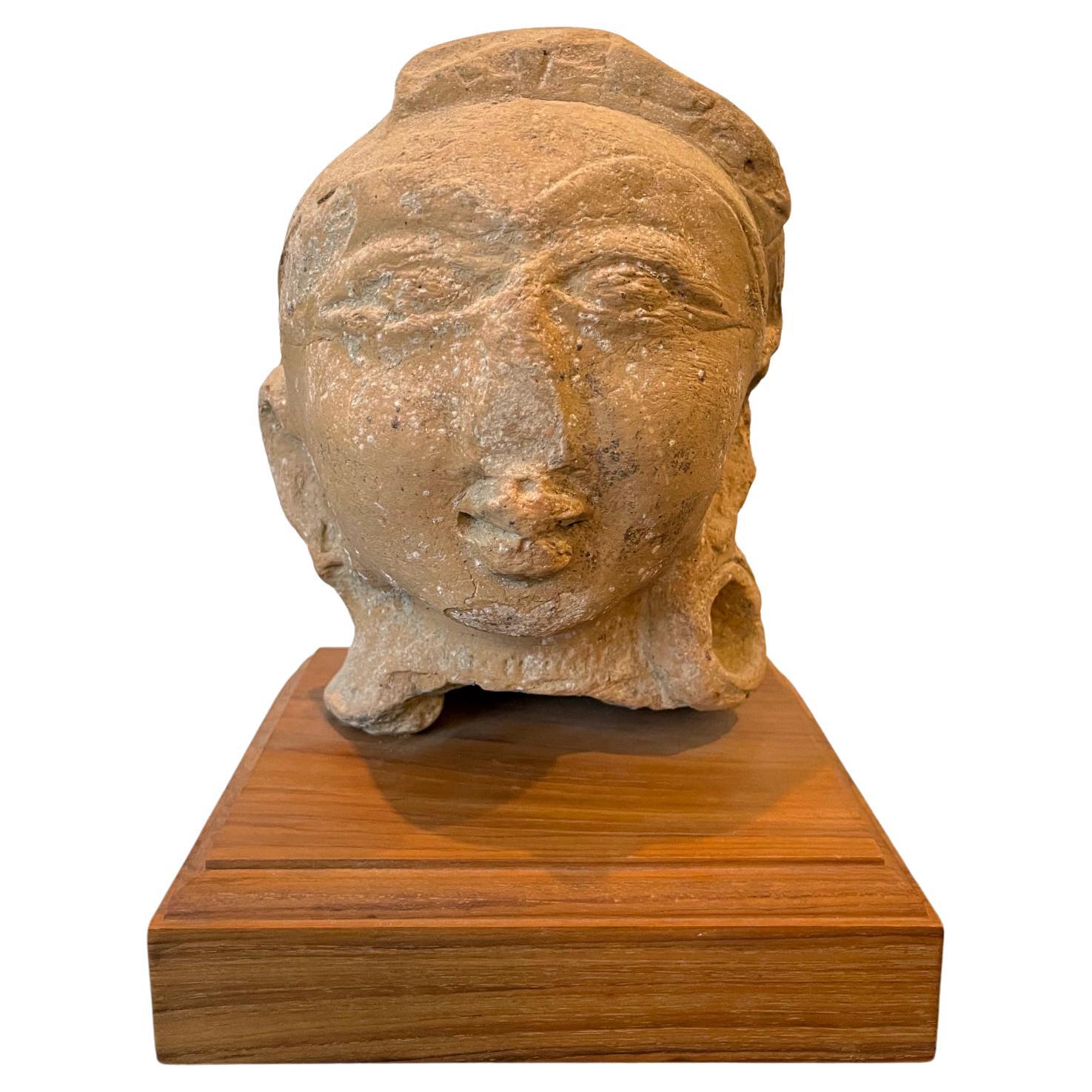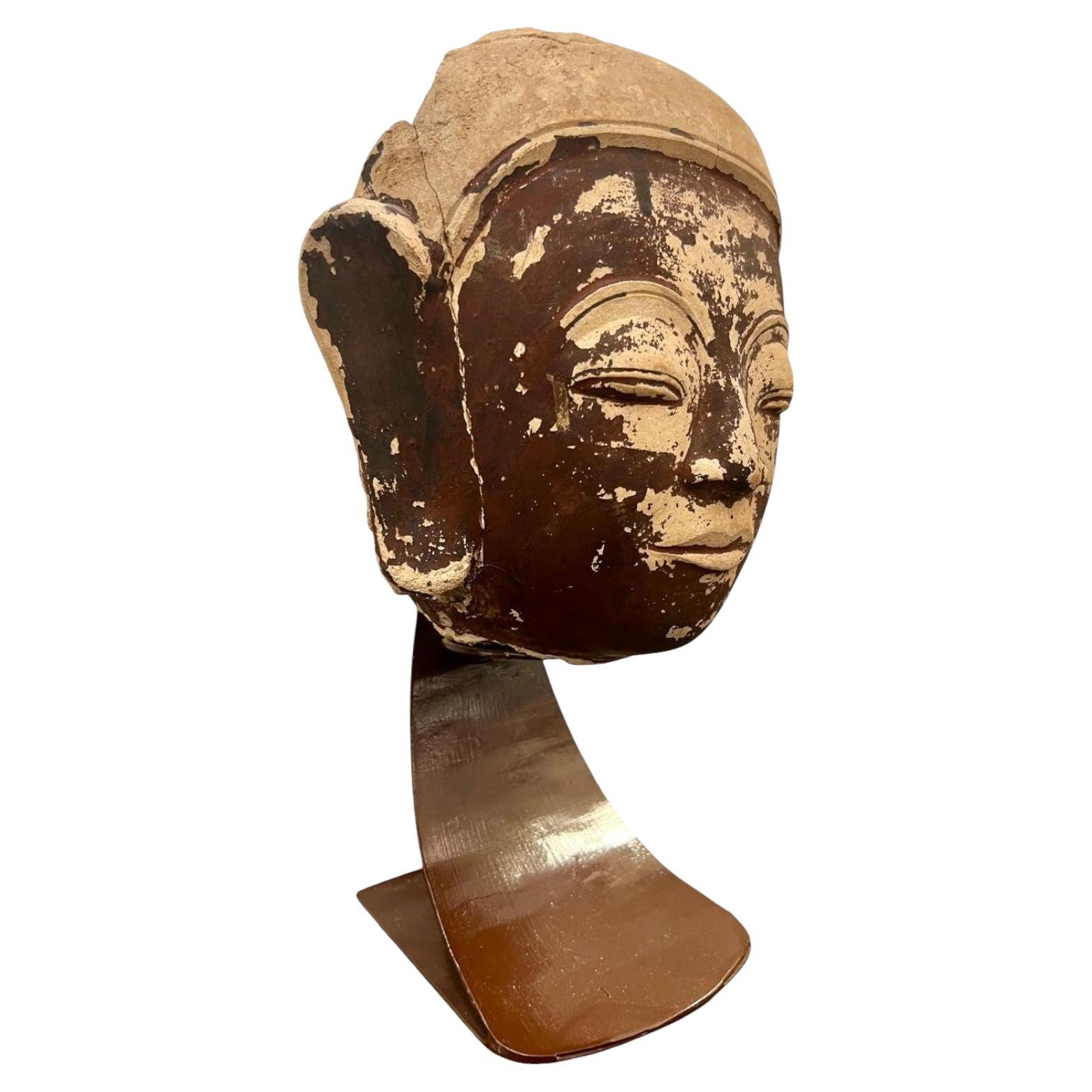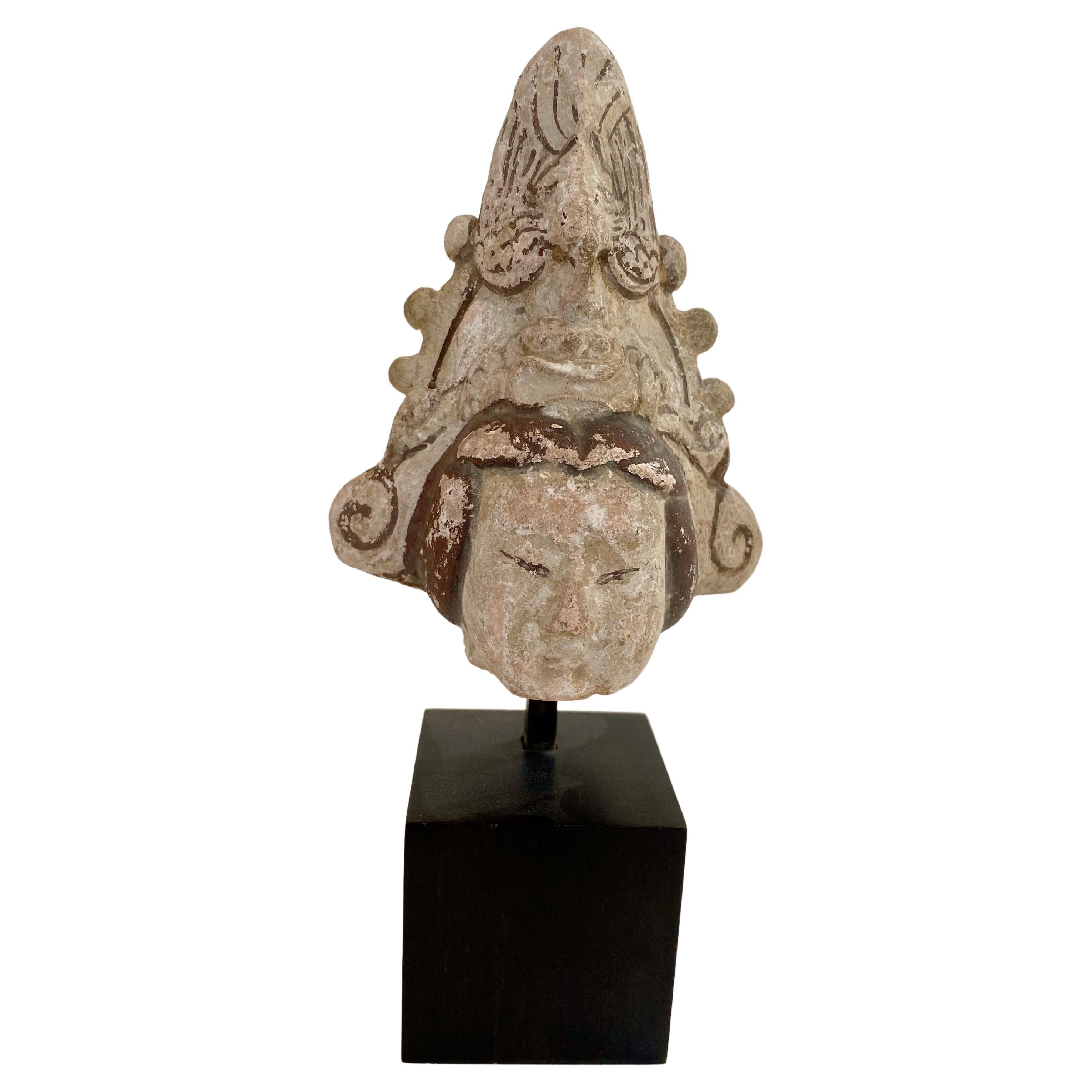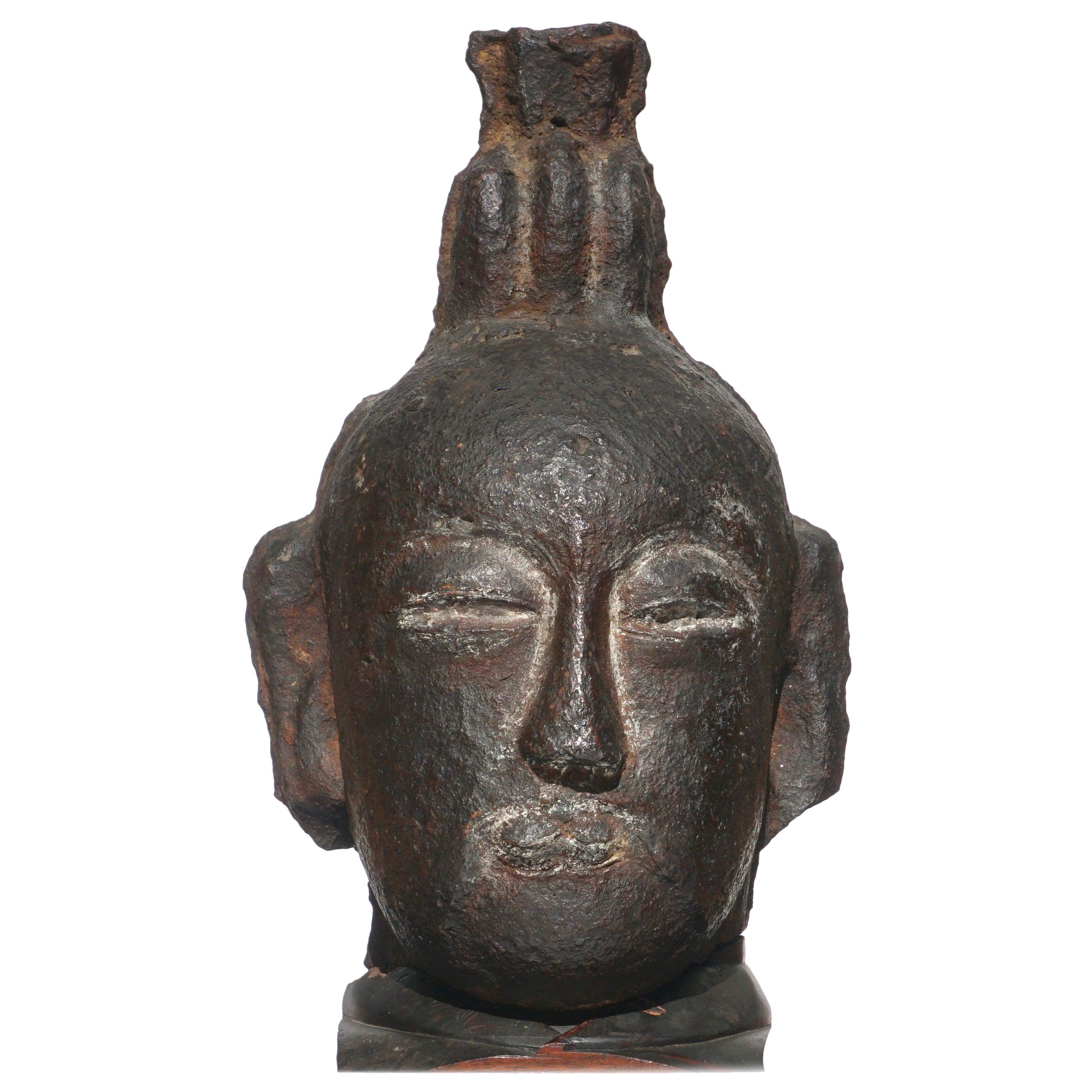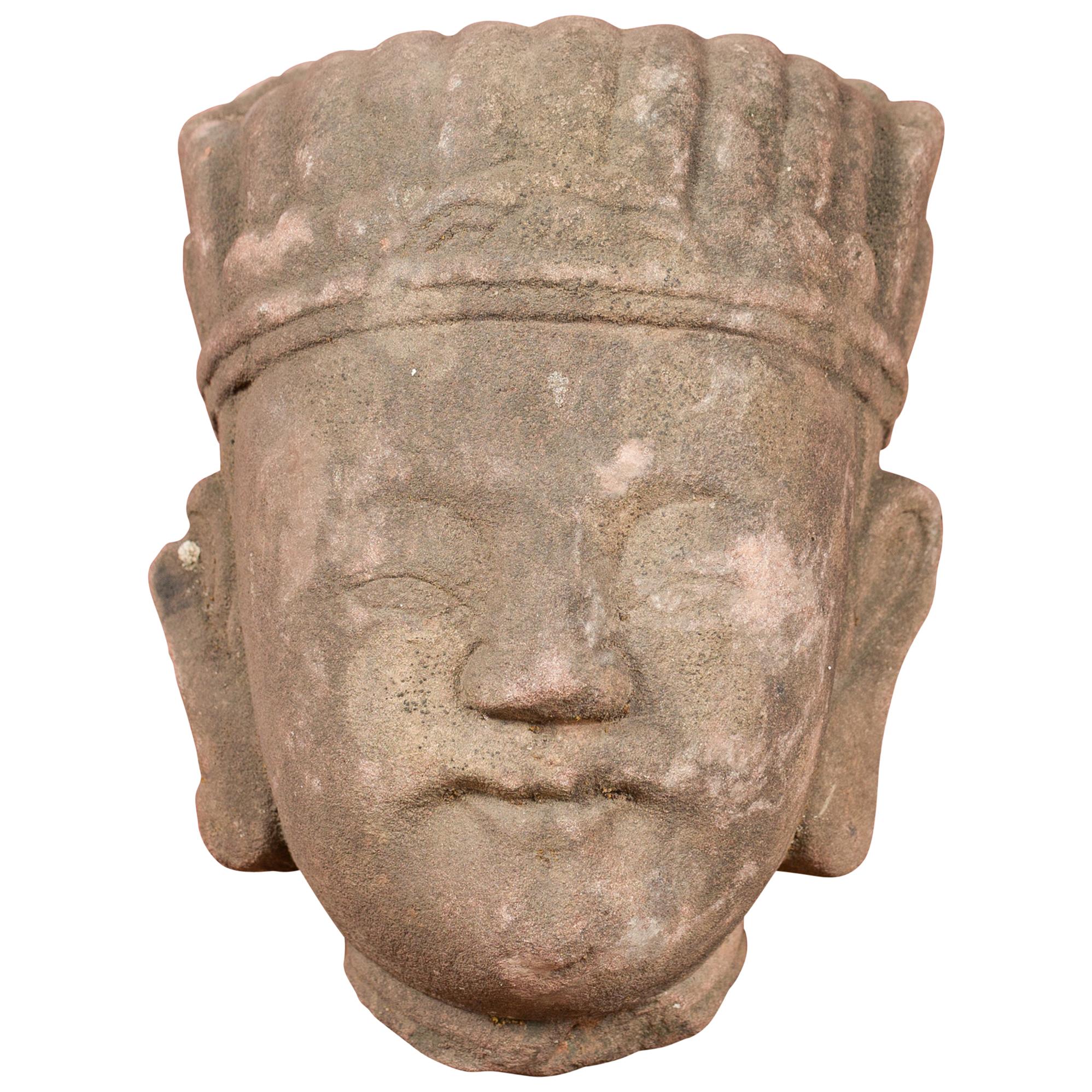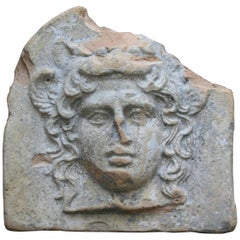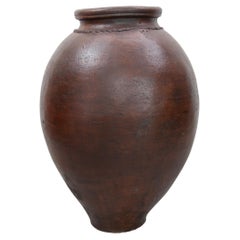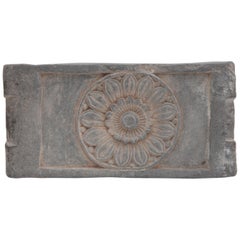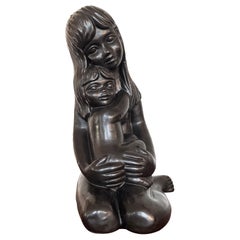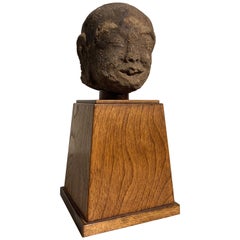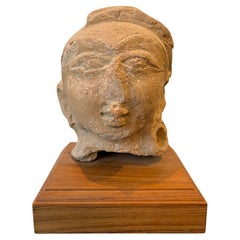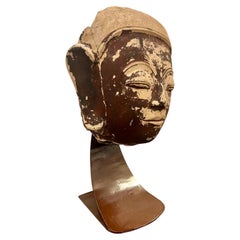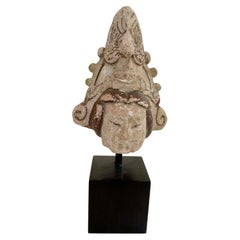Items Similar to Artefact, Majapahit Terracotta Expressive Head, Java, 1300 AD
Want more images or videos?
Request additional images or videos from the seller
1 of 8
Artefact, Majapahit Terracotta Expressive Head, Java, 1300 AD
$5,082.87
$6,353.5920% Off
£3,762.78
£4,703.4820% Off
€4,280
€5,35020% Off
CA$7,002.97
CA$8,753.7120% Off
A$7,802.30
A$9,752.8720% Off
CHF 4,073.17
CHF 5,091.4620% Off
MX$94,730.26
MX$118,412.8320% Off
NOK 51,197.06
NOK 63,996.3220% Off
SEK 48,393.66
SEK 60,492.0720% Off
DKK 32,588.68
DKK 40,735.8520% Off
About the Item
A figurative construction ceramic probably a water collector simply modeled, this head is very expressive and the details can clearly be seen.
The Trowulan archaeological site, approximately 100 square kilometres, located in the Mojokerto Regency is believed to contain the remains of what was once the capital city of the Majapahit Empire, featured by 14th century poet Mpu Prapanca in his poem Nagarakretagama. The city was razed during a fight between Girindrawardhana and Kertabhumi in 1478. The Trowulan site is the only archaeological site dating to the Hindu-Buddha classical age to be found in Indonesia. Archaeological remnants and artefacts of the old city in the Trowulan Site were found buried underground as well as on the surface and are still being found today.rtefact:Majapahit terracotta head.
Country:Indonesia / Mojokerto Regency, Eastern Java.Culture:Majapahit. 1293 / 1500 AD.Majapahit. 1293 / 1500 AD.Material:Ceramic with porcelain inlays .Broken and reconnected. Otherwise exceptionally well preserved. With a fine and authentic patina of age.
Dimensions: Length: 25 cm. Height: 13 cm.Provenance:Once being part of the old private coll. T. P, A / Later: Ex private coll. I .R, A, Belgium. Acquired in the1980s.
Certificate:Akanthos Ancient Art.
Lit:Klokke, M. J., In: “VersunkeneKönigreiche Indonesiëns”, Von Tarumanagara bis Majapahit, Von Zabern, Mainz, 1995.
- Dimensions:Height: 5.12 in (13 cm)Width: 9.85 in (25 cm)Depth: 3.15 in (8 cm)
- Style:Folk Art (Of the Period)
- Materials and Techniques:
- Place of Origin:
- Period:
- Date of Manufacture:1293-1500 AD
- Condition:Wear consistent with age and use.
- Seller Location:Antwerp, BE
- Reference Number:1stDibs: LU931814095171
About the Seller
4.9
Platinum Seller
Premium sellers with a 4.7+ rating and 24-hour response times
Established in 1988
1stDibs seller since 2012
830 sales on 1stDibs
Typical response time: 1 hour
Associations
International Confederation of Art and Antique Dealers' Associations
- ShippingRetrieving quote...Shipping from: Antwerp, Belgium
- Return Policy
Authenticity Guarantee
In the unlikely event there’s an issue with an item’s authenticity, contact us within 1 year for a full refund. DetailsMoney-Back Guarantee
If your item is not as described, is damaged in transit, or does not arrive, contact us within 7 days for a full refund. Details24-Hour Cancellation
You have a 24-hour grace period in which to reconsider your purchase, with no questions asked.Vetted Professional Sellers
Our world-class sellers must adhere to strict standards for service and quality, maintaining the integrity of our listings.Price-Match Guarantee
If you find that a seller listed the same item for a lower price elsewhere, we’ll match it.Trusted Global Delivery
Our best-in-class carrier network provides specialized shipping options worldwide, including custom delivery.More From This Seller
View AllAncient Greek Terracotta Antefix in Form of the Head of Artemis Bendis, Taranto
Located in Antwerp, BE
Ancient Greek mould-made terracotta antefix decorated with the female head of the Goddess Artemis Bendis.
Western Greek, Italy, Taranto, early 4th century BC.
Two small feathered win...
Category
Antique 15th Century and Earlier Italian Classical Greek Antiquities
Materials
Ceramic
Antique Life Size Stoneware Vase for Indoor or Outdoor made in France
Located in Antwerp, BE
Large Antique Vase with a very nice patina during the years of use. This antique vase, Made in France, its weathered surface and faded hues whispering tales of its rich history. Its ...
Category
Antique 1870s French Folk Art Vases
Materials
Ceramic
Ancient Buddhist Stone Tabletop Altar with a Lotus Flower
Located in Antwerp, BE
An exceptional and very early Buddhist stone altar equipped with two handgrips for moving it to the spot of the planned sacrifice. Carved by hand from a si...
Category
Antique 15th Century and Earlier Asian Hellenistic Antiquities
Materials
Schist
$7,125 Sale Price
20% Off
Emiel Laskaris Ceramic Statue Mother and Child Belgium Artist 1970s
By Perignem
Located in Antwerp, BE
Statue of a seated Mother with Child by Emiel Laskaris, St. Niklaas Belgium ca. 1960. Black metallic satin glaze on reddish brown clay. Very graphic and strikingly powerful in appea...
Category
Vintage 1970s Belgian Mid-Century Modern Figurative Sculptures
Materials
Ceramic
Ancient Jain Altarpiece with Three Standing Jina's, Gujarat, India 16th Century
Located in Antwerp, BE
An authentic, ancient and exceptional Three Jina Shrine. For it’s age the altarpiece is in a very good condition and rather large. The image of three standing, nude Jinas flanked by the other 21 seated Jinas is rare. The lintel of the shrine is showing the nine comets and three seated figures...
Category
Antique 16th Century Indian Medieval Antiquities
Materials
Bronze
$14,251 Sale Price
20% Off
Ceramic Sculpture with a Group of Playing Putti's 19th Century Belgium
Located in Antwerp, BE
Beautiful in detail and charming 19th century unglazed terracotta sculpture. Features a design of three cherubic children with lamps and fruit, playing with two goats on the base of ...
Category
Antique 1890s Belgian Folk Art Figurative Sculptures
Materials
Terracotta
$1,425 Sale Price
20% Off
You May Also Like
Indonesian Majapahit Terracotta Head of a Male, circa 14th Century
Located in Austin, TX
A charming head of a young male, Majapahit Empire, region of Trowulan, Eastern Java, Indonesia, 13th-14th century.
The head well sculpted as a smiling, youthful male with buck teet...
Category
Antique 15th Century and Earlier Javanese Tribal Sculptures and Carvings
Materials
Terracotta
Indian Terracotta Sculpted Head Gupta Period
Located in Atlanta, GA
A fragment of Terracotta statue displayed on wood block stand from ancient Indian continent dated to the Gupta period (4th-6th century). The head of the...
Category
Antique 15th Century and Earlier Indian Archaistic Sculptures and Carvings
Materials
Terracotta, Wood
Terracotta Buddha head, Shan State Kingdom, Burma, 16th/18th century
Located in NICE, FR
Stoneware Buddha head, Shan State Kingdom, Burma, 16th/18th century
Buddha head from a temple facing built entirely of mud bricks during the 16th/18th century. Maravijaya Buddha. Sh...
Category
Antique 17th Century Burmese Medieval Sculptures and Carvings
Materials
Terracotta, Lacquer
12th Century Terracotta Head of a Woman
Located in Atlanta, GA
12th century terracotta head of a woman, Song Dynasty (from 960 to 1279).
This small, delicately molded head of a woman wearing an elaborate headdress is mounted on a cube-shaped...
Category
Antique 15th Century and Earlier Chinese Ceramics
Materials
Pottery
$725 / item
Song to Ming Dynasty Cast Iron Daoist Buddhist Head
Located in Dallas, TX
Daoist sage, official, or possibly a Buddhist acolyte.
A large, thick and heavy cast iron statue of a head. Custom vintage carved hardwood stand finishes off this outstanding and decorative bust, circa 10th...
Category
Antique 15th Century and Earlier Chinese Ming Busts
Materials
Iron
Qing Dynasty Period 19th Century Hand-Carved Head Sculpture of an Official
Located in Yonkers, NY
A Qing dynasty period hand-carved head sculpture from the 19th century, with headdress. Carved in China during the Qing Dynasty, this 19th-centur...
Category
Antique 19th Century Chinese Sculptures and Carvings
Materials
Stone
More Ways To Browse
Antique Well Head
Fine Art Models
Asian Heads
Java Furniture
Terracotta Head
Broken Ceramics
Antique Terracotta Head
P M Porcelain
Porcelain Buddha
Terracotta Capital
Terracotta Buddha
Indonesian Buddha
Ceramic Buddha Head
Buddha 14th Century
Terracotta Buddha Head
Majapahit Terracotta
Japanese Porcelain Imari
Vintage Asian Ceramics
